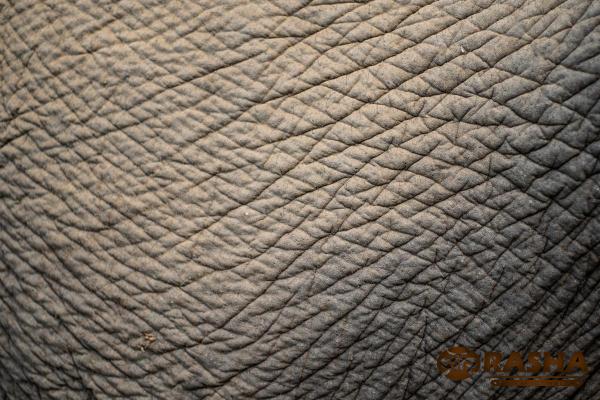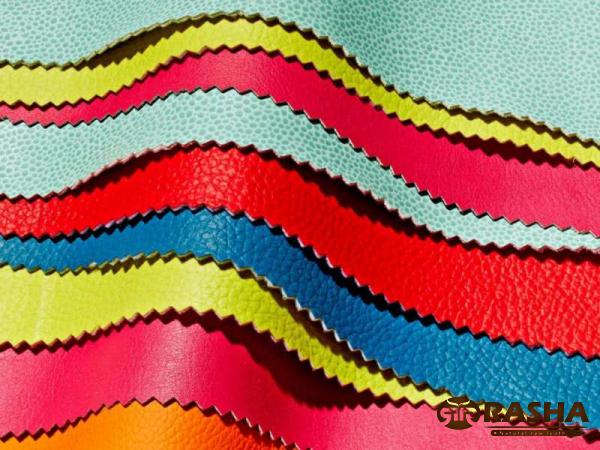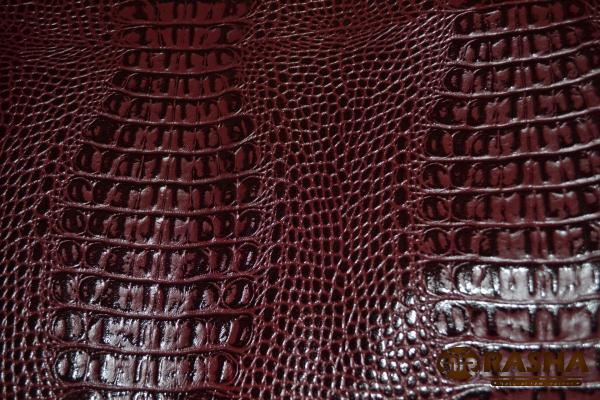Sheep leather is a versatile and highly sought-after material used in the fashion industry for its impeccable quality and luxurious appeal. With a rich history dating back thousands of years, sheep leather continues to be a staple choice for designers and consumers alike. This article will delve into the characteristics of sheep leather, its manufacturing process, and its various applications in the fashion and accessory industry. Characteristics of Sheep Leather: Sheep leather is renowned for its softness, suppleness, and durability. Unlike other types of leather, sheepskin is known for its fine grain, making it an ideal choice for high-end products. The natural elasticity of sheep leather ensures that it comfortably molds to the wearer and maintains its shape over time. Furthermore, sheepskin possesses excellent insulating properties, making it an optimal choice for products designed to provide warmth and comfort. Manufacturing Process: Sheep leather is derived from the hides of sheep, which are extensively available in various parts of the world. The manufacturing process involves several stages, including: 1. Skinning: After slaughtering sheep for consumption, their skins are removed carefully to preserve their quality and minimize damage. 2. Preservation: The skin is treated with preservation techniques such as salting or application of chemicals to prevent decay and preserve the raw material. 3. Soaking: The preserved skin is soaked in clean water for a specific duration to eliminate salt and other impurities. 4. Liming: The skin is then treated with a lime and water solution to loosen the hair follicles and separate the epidermis from the dermis. 5. Fleshing and Scudding: The lime-treated skin is mechanically or manually scraped to remove excess flesh and fat, resulting in a clean surface. 6. Tanning: The tanning process involves treatment with various tannins, typically chrome or vegetable tanning methods, to transform the raw hide into flexible, resilient leather. 7. Dyeing and Finishing: Once the tanned leather is prepared, it may be dyed to the desired color and undergo additional finishing processes, such as sanding, buffing, or embossing, to enhance its appearance and texture. Applications in Fashion and Accessories: Sheep leather is highly valued for its versatility and is employed in an array of fashion and accessory applications including: 1. Apparel: Sheep leather is widely used in the production of garments, including jackets, pants, skirts, and dresses. Its softness and lightweight properties make it a popular choice for luxurious outerwear items. 2. Footwear: Sheep leather is a preferred material for footwear due to its inherent softness and breathability.

leather
 It is particularly favored in the production of high-quality shoes, boots, and slippers, providing comfort and durability. 3. Handbags and Accessories: Sheep leather is commonly used to create stylish and durable handbags, wallets, belts, and other fashion accessories. Its pliable nature enables the creation of intricate designs and detailing. 4. Upholstery: The soft, supple texture of sheep leather makes it a desirable choice for upholstery in luxury furniture and automobile interiors. Its natural insulation properties make it a comfortable and aesthetically pleasing option for seating and other applications. 5. Sporting Equipment: Sheep leather is also utilized in the production of items such as gloves, balls, and saddles. Its durability and resistance against abrasion make it suitable for withstanding intense physical activity. Sustainability and Ethical Considerations: As consumer awareness about sustainability and ethical practices increases, it is essential to address the environmental impact and ethical considerations associated with sheep leather production. Sustainable and responsible practices include: 1. Sourcing: Promoting responsible sourcing of sheepskin from reputable suppliers who prioritize animal welfare. This includes procuring leather from regions with stringent regulations surrounding animal husbandry. 2. Traceability: Implementing strict traceability systems to ensure that sheepskin used in production comes from verified sources that adhere to ethical practices. 3. Environmental Impact: Employing eco-friendly tanning processes, such as vegetable-based tanning methods, to reduce the usage of harmful chemicals and minimize environmental pollution. Conclusion: Sheep leather is a luxurious and versatile material with a long-standing history in the fashion industry. Its soft texture, durability, and excellent insulating properties make it highly desirable for a multitude of applications including apparel, footwear, accessories, upholstery, and sporting equipment. However, it is crucial to prioritize sustainable and ethical practices in the production of sheep leather to ensure a more responsible and environmentally friendly approach. With its timeless appeal and remarkable qualities, sheep leather remains an essential component in the world of fashion and accessories. I. Sheep Leather: A Lucrative Market Segment The sheep leather industry is a significant market segment within the larger leather industry. With a constant demand for high-quality leather products, sheep leather holds a prominent position due to its exceptional characteristics and versatility. The global sheep leather market has shown steady growth over the years, driven by increasing consumer preference for luxury goods, particularly in the fashion and accessory sectors. As a business, tapping into this market can offer substantial opportunities for growth and profitability. II. Understanding Consumer Demand and Trends To successfully enter the sheep leather market, it is crucial to understand consumer preferences and key fashion trends. Consumers today are becoming increasingly conscious of the materials used in products and are seeking sustainable and ethically sourced options.
It is particularly favored in the production of high-quality shoes, boots, and slippers, providing comfort and durability. 3. Handbags and Accessories: Sheep leather is commonly used to create stylish and durable handbags, wallets, belts, and other fashion accessories. Its pliable nature enables the creation of intricate designs and detailing. 4. Upholstery: The soft, supple texture of sheep leather makes it a desirable choice for upholstery in luxury furniture and automobile interiors. Its natural insulation properties make it a comfortable and aesthetically pleasing option for seating and other applications. 5. Sporting Equipment: Sheep leather is also utilized in the production of items such as gloves, balls, and saddles. Its durability and resistance against abrasion make it suitable for withstanding intense physical activity. Sustainability and Ethical Considerations: As consumer awareness about sustainability and ethical practices increases, it is essential to address the environmental impact and ethical considerations associated with sheep leather production. Sustainable and responsible practices include: 1. Sourcing: Promoting responsible sourcing of sheepskin from reputable suppliers who prioritize animal welfare. This includes procuring leather from regions with stringent regulations surrounding animal husbandry. 2. Traceability: Implementing strict traceability systems to ensure that sheepskin used in production comes from verified sources that adhere to ethical practices. 3. Environmental Impact: Employing eco-friendly tanning processes, such as vegetable-based tanning methods, to reduce the usage of harmful chemicals and minimize environmental pollution. Conclusion: Sheep leather is a luxurious and versatile material with a long-standing history in the fashion industry. Its soft texture, durability, and excellent insulating properties make it highly desirable for a multitude of applications including apparel, footwear, accessories, upholstery, and sporting equipment. However, it is crucial to prioritize sustainable and ethical practices in the production of sheep leather to ensure a more responsible and environmentally friendly approach. With its timeless appeal and remarkable qualities, sheep leather remains an essential component in the world of fashion and accessories. I. Sheep Leather: A Lucrative Market Segment The sheep leather industry is a significant market segment within the larger leather industry. With a constant demand for high-quality leather products, sheep leather holds a prominent position due to its exceptional characteristics and versatility. The global sheep leather market has shown steady growth over the years, driven by increasing consumer preference for luxury goods, particularly in the fashion and accessory sectors. As a business, tapping into this market can offer substantial opportunities for growth and profitability. II. Understanding Consumer Demand and Trends To successfully enter the sheep leather market, it is crucial to understand consumer preferences and key fashion trends. Consumers today are becoming increasingly conscious of the materials used in products and are seeking sustainable and ethically sourced options.
Specifications of leather
 Understanding the demand for eco-friendly and cruelty-free products can help businesses position themselves as responsible and socially-conscious brands. Additionally, staying updated with fashion trends and aligning product offerings with current styles and designs can enhance market competitiveness. III. Establishing Strong Supplier Relationships Building strong relationships with reputable suppliers is vital for businesses operating in the sheep leather industry. A reliable and trustworthy supply chain ensures consistent access to high-quality sheepskins to meet production requirements. It is essential to source sheepskins from suppliers who adhere to ethical and sustainable practices. Conducting due diligence and verifying suppliers’ credentials, certifications, and adherence to animal welfare standards are critical steps in establishing a reliable supply chain. IV. Resilient Manufacturing Processes for Quality Assurance Maintaining stringent manufacturing processes is crucial for delivering high-quality sheep leather products. Implementing quality control systems at each stage of the production process ensures that only superior-grade materials are used. Regular inspections and audits can help identify and address any potential issues that may affect the overall quality of the leather. In doing so, businesses can build a reputation for consistency, reliability, and superior craftsmanship. V. Developing an Innovative Product Line Differentiation is key in a highly competitive market. To stand out, businesses should focus on developing an innovative product line that offers unique features, designs, or functionalities. This can be achieved by collaborating with designers or investing in research and development. Offering a diverse range of products, including customized options, allows businesses to cater to a wider customer base and cater to individual preferences and requirements. VI. Investing in Marketing and Branding Effective marketing and branding strategies play a vital role in capturing and retaining target customers in the sheep leather market. Developing a strong brand identity that aligns with customer values and resonates with their aspirations is integral. Investing in creative advertising campaigns, establishing an engaging online presence, and leveraging social media platforms can help build brand awareness and attract customers. VII. Establishing Distribution Channels Developing a robust and efficient distribution network is crucial to reaching target markets and achieving profitable sales volumes. Identifying and partnering with distributors, wholesalers, and retailers who have a strong presence in the fashion and accessory industry can help expand market reach. Utilizing e-commerce platforms and establishing online sales channels enable businesses to tap into global markets and connect with consumers directly. VIII. Providing Excellent Customer Service Customer satisfaction is a key driver for success in the sheep leather industry. Providing excellent customer service is vital in building customer loyalty, generating positive word-of-mouth, and securing repeat business. Offering product warranties, hassle-free returns and exchanges, and prompt responses to customer inquiries contribute to a positive overall experience. Valuing and addressing customer feedback also helps businesses identify areas for improvement and continuously enhance their offerings.
Understanding the demand for eco-friendly and cruelty-free products can help businesses position themselves as responsible and socially-conscious brands. Additionally, staying updated with fashion trends and aligning product offerings with current styles and designs can enhance market competitiveness. III. Establishing Strong Supplier Relationships Building strong relationships with reputable suppliers is vital for businesses operating in the sheep leather industry. A reliable and trustworthy supply chain ensures consistent access to high-quality sheepskins to meet production requirements. It is essential to source sheepskins from suppliers who adhere to ethical and sustainable practices. Conducting due diligence and verifying suppliers’ credentials, certifications, and adherence to animal welfare standards are critical steps in establishing a reliable supply chain. IV. Resilient Manufacturing Processes for Quality Assurance Maintaining stringent manufacturing processes is crucial for delivering high-quality sheep leather products. Implementing quality control systems at each stage of the production process ensures that only superior-grade materials are used. Regular inspections and audits can help identify and address any potential issues that may affect the overall quality of the leather. In doing so, businesses can build a reputation for consistency, reliability, and superior craftsmanship. V. Developing an Innovative Product Line Differentiation is key in a highly competitive market. To stand out, businesses should focus on developing an innovative product line that offers unique features, designs, or functionalities. This can be achieved by collaborating with designers or investing in research and development. Offering a diverse range of products, including customized options, allows businesses to cater to a wider customer base and cater to individual preferences and requirements. VI. Investing in Marketing and Branding Effective marketing and branding strategies play a vital role in capturing and retaining target customers in the sheep leather market. Developing a strong brand identity that aligns with customer values and resonates with their aspirations is integral. Investing in creative advertising campaigns, establishing an engaging online presence, and leveraging social media platforms can help build brand awareness and attract customers. VII. Establishing Distribution Channels Developing a robust and efficient distribution network is crucial to reaching target markets and achieving profitable sales volumes. Identifying and partnering with distributors, wholesalers, and retailers who have a strong presence in the fashion and accessory industry can help expand market reach. Utilizing e-commerce platforms and establishing online sales channels enable businesses to tap into global markets and connect with consumers directly. VIII. Providing Excellent Customer Service Customer satisfaction is a key driver for success in the sheep leather industry. Providing excellent customer service is vital in building customer loyalty, generating positive word-of-mouth, and securing repeat business. Offering product warranties, hassle-free returns and exchanges, and prompt responses to customer inquiries contribute to a positive overall experience. Valuing and addressing customer feedback also helps businesses identify areas for improvement and continuously enhance their offerings.
buy leather
 IX. Embracing Sustainability and Ethical Practices Adopting sustainable and ethical practices is imperative for businesses operating in the sheep leather industry. Reducing environmental impact, promoting responsible sourcing, and ensuring animal welfare are becoming increasingly important to customers. Implementing eco-friendly tanning processes, using vegetable-based dyes, and communicating transparently about sourcing and manufacturing practices can help businesses attract conscious consumers and enhance their brand image. X. Collaborating with Industry Stakeholders Collaborating with industry stakeholders such as designers, manufacturers, suppliers, and retailers can be mutually beneficial. Engaging in partnerships and alliances can enable businesses to leverage shared expertise, access new markets, and maximize resources. Collaborative efforts can lead to the development of innovative products, streamlined supply chains, and increased market reach, ultimately driving business growth and profitability. XI. Monitoring Industry Trends and Innovations The sheep leather industry is dynamic and constantly evolving. Staying updated with industry trends, innovations, and technological advancements is crucial for maintaining a competitive edge. Regularly monitoring consumer preferences, sourcing new materials, and embracing sustainable manufacturing practices can help businesses stay ahead of the curve. Engaging in industry events, trade shows, and conferences provides opportunities for networking, knowledge exchange, and gaining insights into emerging market trends. XII. Adapting to Changing Market Dynamics The sheep leather industry, like any other, is subject to market fluctuations and changing consumer preferences. Businesses must remain flexible and adaptable to evolving market dynamics. This involves regularly reviewing and refining strategies, adjusting product offerings, and staying responsive to customer feedback. By embracing change and continuously innovating, businesses can navigate through challenges and remain profitable in the ever-evolving sheep leather market. Conclusion: The sheep leather industry represents a lucrative market segment with immense potential for growth and profitability. By understanding consumer demand, establishing strong supplier relationships, maintaining resilient manufacturing processes, and adopting sustainable practices, businesses can thrive in this competitive market. Investing in marketing and branding efforts, providing excellent customer service, and monitoring industry trends are also essential for success. With the right strategies, businesses can position themselves as leading players in the sheep leather industry and cater to the evolving needs and preferences of consumers worldwide.
IX. Embracing Sustainability and Ethical Practices Adopting sustainable and ethical practices is imperative for businesses operating in the sheep leather industry. Reducing environmental impact, promoting responsible sourcing, and ensuring animal welfare are becoming increasingly important to customers. Implementing eco-friendly tanning processes, using vegetable-based dyes, and communicating transparently about sourcing and manufacturing practices can help businesses attract conscious consumers and enhance their brand image. X. Collaborating with Industry Stakeholders Collaborating with industry stakeholders such as designers, manufacturers, suppliers, and retailers can be mutually beneficial. Engaging in partnerships and alliances can enable businesses to leverage shared expertise, access new markets, and maximize resources. Collaborative efforts can lead to the development of innovative products, streamlined supply chains, and increased market reach, ultimately driving business growth and profitability. XI. Monitoring Industry Trends and Innovations The sheep leather industry is dynamic and constantly evolving. Staying updated with industry trends, innovations, and technological advancements is crucial for maintaining a competitive edge. Regularly monitoring consumer preferences, sourcing new materials, and embracing sustainable manufacturing practices can help businesses stay ahead of the curve. Engaging in industry events, trade shows, and conferences provides opportunities for networking, knowledge exchange, and gaining insights into emerging market trends. XII. Adapting to Changing Market Dynamics The sheep leather industry, like any other, is subject to market fluctuations and changing consumer preferences. Businesses must remain flexible and adaptable to evolving market dynamics. This involves regularly reviewing and refining strategies, adjusting product offerings, and staying responsive to customer feedback. By embracing change and continuously innovating, businesses can navigate through challenges and remain profitable in the ever-evolving sheep leather market. Conclusion: The sheep leather industry represents a lucrative market segment with immense potential for growth and profitability. By understanding consumer demand, establishing strong supplier relationships, maintaining resilient manufacturing processes, and adopting sustainable practices, businesses can thrive in this competitive market. Investing in marketing and branding efforts, providing excellent customer service, and monitoring industry trends are also essential for success. With the right strategies, businesses can position themselves as leading players in the sheep leather industry and cater to the evolving needs and preferences of consumers worldwide.










Your comment submitted.